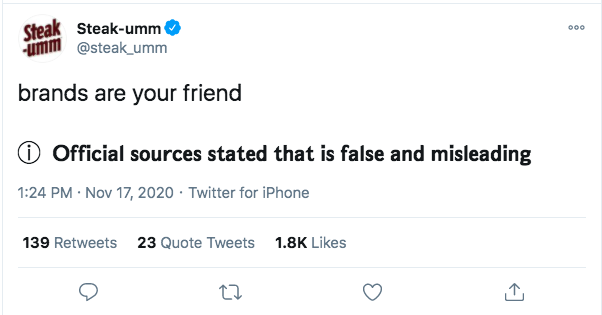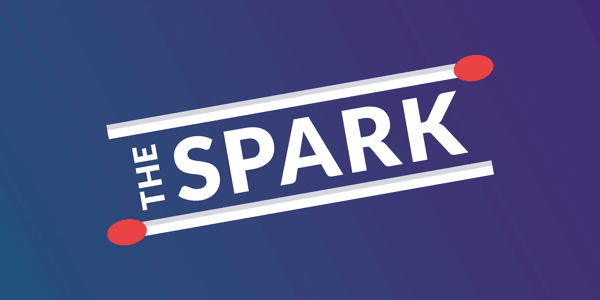Major Updates ... for Reels This Time.The beloved Instagram home screen has gotten a facelift, and it’s on-trend with 2020. Think: Short-form videos and eCommerce. Instagram’s Reels and Shop features now have individual tabs to make the content discovery, consumption, and creation process more enticing for all parties. And did we mention the platform confirmed ads will be coming to Reels soon? That’s a pretty big deal, too.
Two new tabs means more room for all types of content to flourish. With a dedicated Reels tab, those short-form videos will be easier for users to discover and engage with, so continue repurposing those TikToks. Now’s not the time to stop creating short-form vids, and if you still haven’t started, well … let this be the push you need. Plus, the new Shop tab makes it easier for users to connect with and explore new brands and influencers (hello, new user acquisition channel).
If you didn’t already love Instagram as a marketing tool, these new tabs and upcoming Reels advertising capabilities should sweeten the deal. While users and influencers have not been thrilled by the new look, history tells us they'll come around soon enough. And as IG users are known for high-levels of engagement, your company’s opportunities to get in front of a massive user-base feel all but limited. Reels in your IG strategy, and get to shopping!
TL;DR: Instagram’s increases content real estate with its home screen upgrade featuring dedicated Shop and Reels tabs.
(Ad)ding PrivacyInstagram’s new home tabs? Dope for marketers. Its privacy update? No doubt going to elicit a few groans. The new “Data From Partners” settings enable users to choose whether IG can target them with more personalized ads in the app via the usage of supplementary data sourced from third-party platforms and providers.
This update is a significant blow to marketing strategies across the land, considering over 57% of consumers say they would give up personalized marketing if it meant their data was more protected. The new IG settings, combined with the imminent loss of cookies, policy changes from Apple and Google, and complex data-privacy regulations frequently in flux, can make any digital marketer want to toss their laptop out the window (or at least do this).
While opting out of data sharing won’t remove ads from users’ feeds (just the more personalized ones), the bottom line is that many consumers aren't keen on sharing personal info with companies. Brands need to be upfront about collecting data and how they’re planning to use it. Even though marketers might not be able to hit consumers with as many personalized ads, there are plenty of other Instagram avenues (see above for the how-to on Reels and Shops!) to take ad content to the next level.
TL;DR: Instagram’s latest update allows users to opt-out of personalized marketing, adding to the growing list of data regulations and challenges marketers must face.
Auditory AdvertisingWith everyone playing music, podcasts, and videos in the background during work (from home) days, so they don’t go insane, audio ads aren’t going anywhere. Following the news that Spotify is acquiring podcast ad company Megaphone, YouTube announced its latest offering to help marketers reach consumers who do more listening than watching: New audio advertising options.
Audio ads (currently in beta) let marketers expand reach and grow brand awareness with audio-based content while still applying the same measurement, audience, and brand safety features available to video campaigns. And while the ads aren’t audio-only (there’s still a visual component), they are designed for an audience who might only be glancing at the screen or flat out ignoring the visuals altogether (see: WFH).
Thanks to the pandemic, streaming is at an all-time high, and audio ads are incredibly effective, with 75% of measured YouTube audio ad campaigns driving a significant lift in brand awareness. When building out your audio ad strategy, YouTube has a friendly reminder to, well, give audio the starring role. Their top tip? Think, “If I close my eyes, can I still clearly understand what this ad is about?” Do this, and soon you’ll be Rolling like the Stones.
TL;DR: YouTube will allow marketers to expand their reach and grow brand awareness with its new audio advertising options.
What Lit Us Up
Official Sources State This Newsletter Is the Best of All NewslettersAnyone who’s found themselves in a 2 a.m. Twitter doom scroll knows it can be a dark place at times. So when an authentically Twitter meme comes around to lighten the mood, we can’t help but breathe a sigh of relief. Enter the “This claim is disputed” label that users and brands are throwing onto the end of their tweets.
Back story: For the past few months, Twitter has flagged Tweets with false or unproven information to try to stop the spread of misinformation. And recently, the number of flagged tweets from one public figure has reached a high, prompting brands like Oreo, Peloton, and (our personal favorite) Steak-umm to hop in with their own labels. The tweets are quippy, some a bit snarky, and a perfect example of a meme marketing moment.
While not new, meme-based marketing continues to become an increasingly legitimate social media strategy for brands. But to get it right, it’s all about timing, creativity, and understanding what resonates with your audience. Get in on a viral trend too late or without adding a unique branded spin? It’s sure to fall flat (or worse, become a meme itself). But by keeping a finger on the pulse of social trends and taking note from some of the branded meme kings, you can join the fun on the lighter side of Twitter.
TL;DR: Brands jump on the latest Twitter meme, adding fake alerts to their tweets to make them stand out. (Was this email forwarded to you? Sign up here.)
|
-1.png?upscale=true&width=346&upscale=true&name=Tier%20One%20logo_color%20(1)-1.png)


